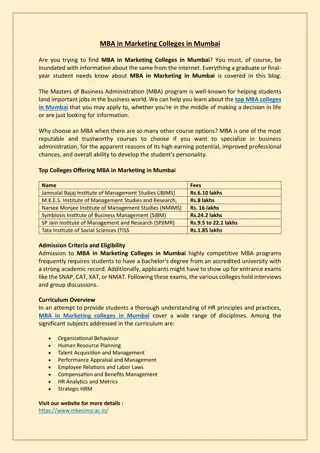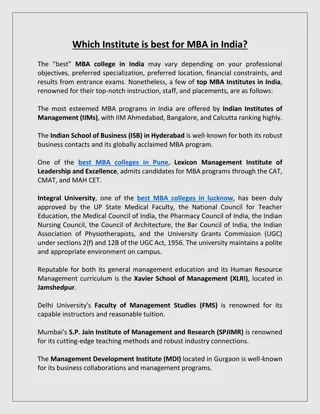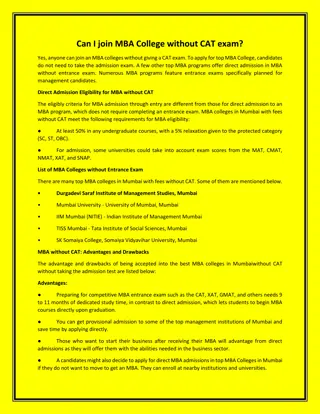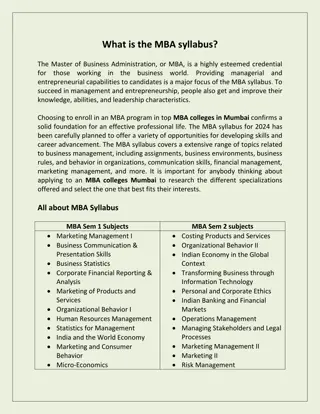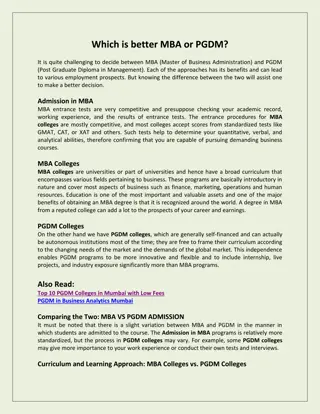
Corporate Strategy and Grand Strategies Overview
"Explore corporate strategy and grand strategies to guide decision-making, enhance value, and achieve long-term objectives. Learn about stability, expansion, retrenchment, and combination strategies for strategic direction. Discover core issues in corporate strategy and the importance of synergy in business coordination."
Download Presentation

Please find below an Image/Link to download the presentation.
The content on the website is provided AS IS for your information and personal use only. It may not be sold, licensed, or shared on other websites without obtaining consent from the author. If you encounter any issues during the download, it is possible that the publisher has removed the file from their server.
You are allowed to download the files provided on this website for personal or commercial use, subject to the condition that they are used lawfully. All files are the property of their respective owners.
The content on the website is provided AS IS for your information and personal use only. It may not be sold, licensed, or shared on other websites without obtaining consent from the author.
E N D
Presentation Transcript
CORPORATE STRATEGY AND GRAND STRATEGIES ARMAAN SALIK J JMC
Corporate strategy Corporate strategy is the overarching plan for the entire corporation, determining the overall direction and scope. It guides decisions across business units to ensure alignment with corporate objectives. Purpose: 1.Value Addition: Enhances individual business units. 2.Key Actions: Selection of businesses to operate in. Allocation of resources among businesses. Sharing of skills and capabilities. Managing business portfolios to achieve synergy. Key Insight: Corporate-level managers act as stewards for shareholders, ensuring strategies enhance overall value.
CORE ISSUES IN CORPORATE STRATEGY What businesses should a firm compete in? Strategic choices regarding markets, industries, and sectors. Identifying growth opportunities and areas to exit. How can businesses be coordinated to create synergy? Achieving collaboration across units to ensure the "whole is greater than the sum of its parts." Leveraging shared resources, technologies, and expertise.
GRAND STRATEGIES OVERVIEW Definition: Master strategies that define the long-term path a corporation takes to achieve objectives. Key Goals: Directional clarity. Decision-making framework. Long-term focus aligned with the corporate mission. Four Types: 1.Stability: Maintain status quo with minimal risk. 2.Expansion: Grow through internal operations or external collaborations. 3.Retrenchment: Reduce operations to refocus on core strengths. 4.Combination: Blend strategies for diversification or survival.
STABILITY STRATEGY Definition: Focuses on maintaining the current market position with small, incremental improvements. When to Use: Risk aversion or unfavorable external conditions. Satisfaction with current performance. Preference for slow and steady progress. Types: No-Change Strategy: Avoids significant changes; ideal for stable environments. Profit Strategy: Short-term focus on profitability without expansion. Pause/Proceed with Caution Strategy: Temporary halt to assess conditions before proceeding.
EXPANSION STRATEGIES Definition: Strategies aimed at achieving growth through increased operations,market share,or business scope. Types of Growth: 1.Internal Growth:Investing in new product development,technology,or capacity expansion. 2.External Growth:Mergers,acquisitions,joint ventures,or strategic alliances. Reasons for Growth: Economies of Scale:Spread fixed costs across larger volumes. TalentAcquisition:Attract skilled professionals to growing firms. Profit Maximization:Ensure sustainability in competitive environments. Market Leadership:Achieve dominance and influence. Survival:Adapt to competitive pressures and industry dynamics.
RETRENCHMENT STRATEGIES Definition: Focused on reducing the scale or scope of operations to regain financial and operational stability. When to Use: Declining performance or weak competitive position. Sales downturns or shrinking profit margins. Types: 1.Turnaround: Revitalize performance through cost-cutting, efficiency, and new strategies. 2.Divestment: Sell off underperforming units or non-core businesses. 3.Bankruptcy: Legal protection to reorganize and settle debts. 4.Liquidation: Exit markets by selling off all assets.
COMBINATION STRATEGIES Definition: Employs multiple strategies concurrently to achieve diverse goals or address varied business needs. Application: Diversified corporations with multiple units. Defensive measures for survival during crises. Examples: Growth in one business unit, retrenchment in another. Simultaneous market expansion and divestiture. Challenges: Resource allocation conflicts. Balancing priorities among competing strategies. Risk of overstretching organizational capabilities.
RESTRUCTURING AS A CORPORATE STRATEGY Definition: A strategic intervention to transform underperforming businesses and unlock their potential. Types: 1.Asset Restructuring: Sale of non-core assets. Acquisitions to bolster core business. 2.Capital Restructuring: Adjust debt-equity ratios. Optimize capital mix to reduce financial burden. 3.Management Restructuring: Revamp leadership and organizational structure. Introduce performance-based rewards and tighter controls. Outcome: Enhanced operational performance. Strategic alignment with growth and profitability objectives. Opportunities for reinvestment or divestment ("sell high").


